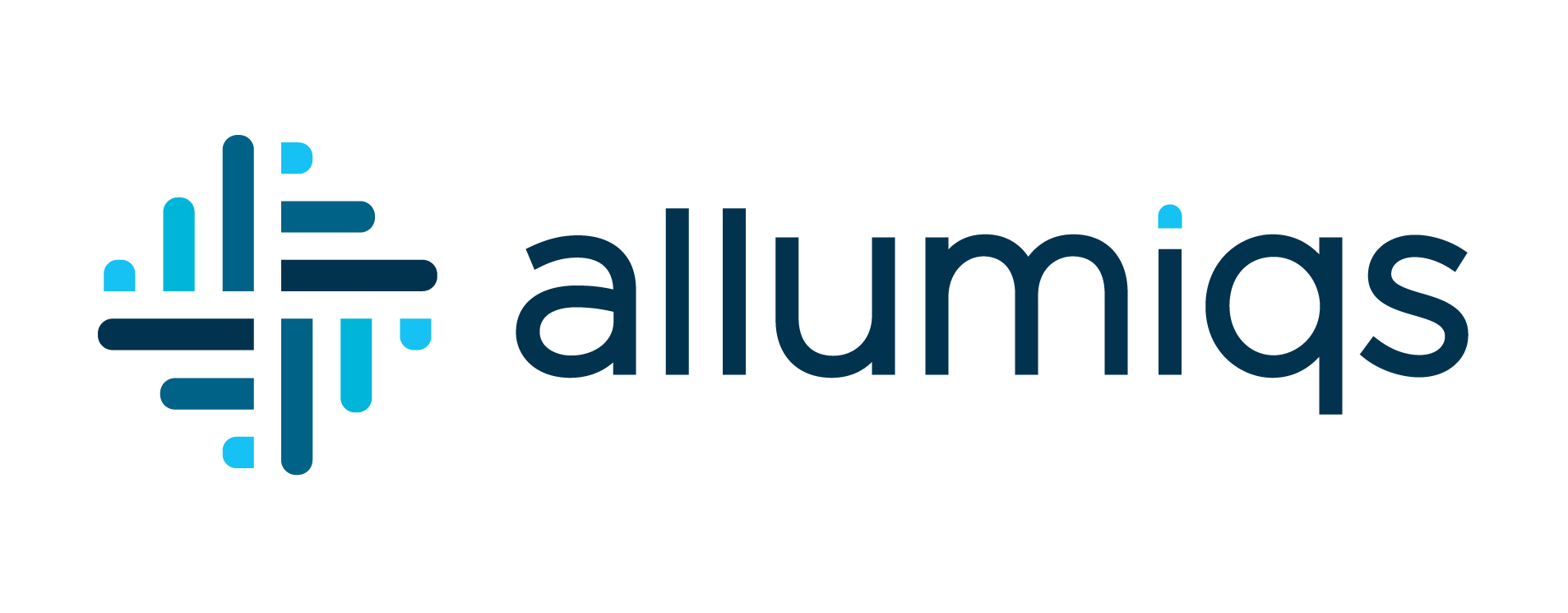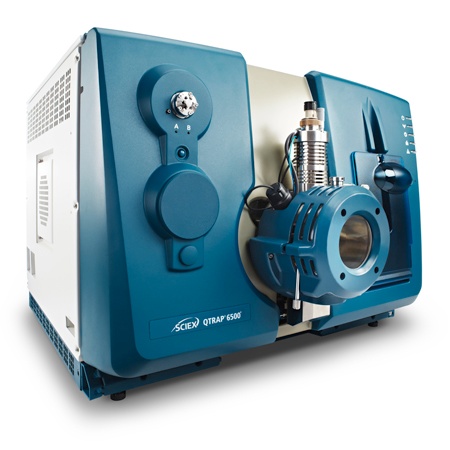
A shiny new QTRAP 6500+ in our labs!
Better sensitivity, better linearity and better selectivity with the QTRAP 6500+ from SCIEX
Sometimes, we don't need all that power. But sometimes, it takes the very best to get what we are after. We are happy to announce that we can now deliver the very best in sensitivity, linearity and selectivity for your mass spectrometry analyses. Our latest toy, the QTRAP 6500+ from Sciex, is fresh out of the box and ready to rock!
What is so great about the QTRAP 6500+?
Well, a lot of things, really. For starters, this triple quadrupole has one of the best range of linearity and sensitivity on the market. We can get a linear quantification over 6 orders of magnitude! This means that with only one standard curve, we will be able to cover an incredible range of concentrations. Therefore, we won't need to be as cautious about the final sample dilutions, and reinjection of diluted samples will most likely be a thing of the past. For you, this means faster results, over a larger range of concentration, with more sensitivity.
Other than its incredible range, this machine is fast. Real fast! In fact, it is so fast that it can switch polarities within 1 milliseconds. This means that we can now monitor molecules in positive and in negative ionization mode in the same injection. The result of this is a higher throughput, leading again to faster results!
Current work example on the QTRAP 6500+
The fluticasone furoate case
Knowing that we were about to get access to such a neat machine, one of our clients approached us to validate/develop a LC-MS/MS method for a small molecule known as fluticasone furoate. This molecule is currently used to treat nasal allergy symptoms and our client is interested to monitor its plasma levels in order to correlate them with.. well we can't really tell you that for now! And why is it a great fit for our instrument? Because it is an inhaled drug that reaches very low plasma concentration (around 2pg/mL), hence high sensitivity is a prerequisite to obtain nice pharmacokinetics profile.
By doing a little bit of online research, we could find several studies that used LC-MS/MS to study molecules from the fluticasone family in plasma. Even more interesting was the fact that the vendors of the QTRAP, Sciex, published an application note on a method for the LC-MS/MS detection of fluticasone furoate, with a QTRAP 6500 (without the + sign, so with a prior version of our machine)! Therefore, we only had to duplicate their settings to get good results, right?
On a first rough try, we got to a LLOQ of 80 fg on column, which correspond to a LLOQ of 16 pg/mL. Since we have a 6500+, we can probably expect more from our machine than from Sciex's 6500. With this in mind, we got to work and tweaked a lot of parameters to lower the LLOQ even more. Within a day, we were able to get to a LLOQ of 7.8 fg on column. So as we speak, we achieved a LLOQ of 1.56 pg/mL, and we still have tests to run. That's very impressive! You can expect a follow up story about this method development as it perfectly showcases the capacity of this amazing machine! Here's what we plan to do to tweak this method for plasma samples :
- Optimize the sample preparation method
- We foresee problems with the concentration of plasma samples, so we have to determine the best sample cleaning method
- Optimize the concentration ratio to get a LLOQ as low as possible
- Optimize the chromatography
In the mean time, here's a comparative table of the methods we found online compared to what we have, as of now. Note that for the absolute sensitivity (see the "On column" row), we're the second best on column, and we're not even finished!
| Fluticazone famility | Propionate | Propionate | Propionate | Propionate | Furoate | Furoate | Furoate |
| Source | Agilent | XBL | Waters | Published paper | PhenoSwitch | Sciex | Shimazu |
| On column | 2.5 fg | 48 fg | 37.5 fg | 80 fg | 7.8 fg | 80 fg | 25 fg |
| LLOQ plasma | 5 pg/mL | 1 pg/mL | 0.75 pg/mL | 2 pg/mL | 1.56pg/mL | 0.2 pg/mL | 0.5 pg/mL |
| Concentration factor | 0.25 | 4.8 | N/A | 2.5 | 1 | 10 | 1 |
| Injection volume (µl) | N/A | 10 | 50 | 40 | 5 | 40 | 50 |
| Theoretical real plasma limit capacity | 5pg/mL* | 4.8 pg/mL | N/A | 5 pg/mL | 1.56 pg/mL | 2 pg/mL | 0.5 pg/mL |
| Instrument | Agilent 6490 | Sciex API 5000 | Water Xevo TQ-S | API 5000 | Sciex 6500+ | Sciex 6500 | LCMS-8050 |
* ion supression occurs if samples are not diluted. They also claim 2.5 fg. Uses the new iFunnel source
What about your TripleTOF 5600? Is it still good?
Of course it is! In fact, it is better than the QTRAP 6500+ for some applications. See, these machines are both mass spectrometers, but they have distinct parts that make them quite different from one another. The QTRAP is an hybrid triple quadrupole/ion trap, which means that it has two quadrupoles and one linear ion trap (LIT) that are lined up and that can select ions to send to the detector in a targeted manner. But! The LIT can be used as a simple quadrupole or as a LIT. The QTRAP is thus able to achieve MS/MS/MS (or MRM3) quantification by selecting and quantifying the fragment of a fragment ion. MRM3 gives the QTRAP a huge advantage in selectivity over conventional TripleQuad. By its new designed ion path, the QTRAP is also much more sensitive than the TripleTOF 5600. We roughly get 10x more ions to the detector with most of the molecules we tested so far. Alternatively, the TripleTOF only has two quadrupoles, but it has a Time-Of-Flight (TOF) in front of the detector. TOF MS has much more resolution than the LIT, giving the TripleTOF very high selectivity. The TripleTOF is also very fast at recording a large mass range withing a single scan. This enables this machine to record every MS/MS ions that is fragmented by the second quadrupole across an eluting chromatogram; SWATH analysis. In short, the QTRAP is better for targeted quantification whereas the TripleTOF is better for profiling/SWATH studies. Here's a quick comparative of the two machines :
Comparative table of the two MS systems
|
|
QTRAP 6500+ |
TripleTOF 5600 |
|
Source |
ESI |
ESI |
|
Attached LC System |
Eksigent MicroLC 200 |
Eksigent MicroLC 200 |
|
Linearity (orders or magnitude) |
5-6 |
2.5-3.5 |
|
Positive and negative ions in the same method? |
Yes |
No |
|
SWATH |
No |
Yes |
|
MS3 |
Yes |
No |
|
Resolution |
Around 11 000 when using LIT in MS1. 0.7 Da in MRM |
35000 (High Res) 15000 (High Sens) |
|
Compatible with SelexION? |
Yes |
No |
|
Preferred application |
Targeted quantification Fast polarity Switching Ion mobity separation High sensitivity Rugged method for large amount of samples MS/MS/MS (MRM3) for increase selectivity |
Profiling Caracterisation/identification MS/MSall SWATH Omics application Intact mass Exact mass Targeted quantification where selectivity is an issue (exact mass high res.) |
Conclusion
With this new machine, we are now able to dig into very complex matrices to pick up minute amounts of your molecule of interest. Positive and negative ions can finally be reunited in one method. A QTRAP and TripleTOF under the same roof: we are more than ready to rock your samples!


